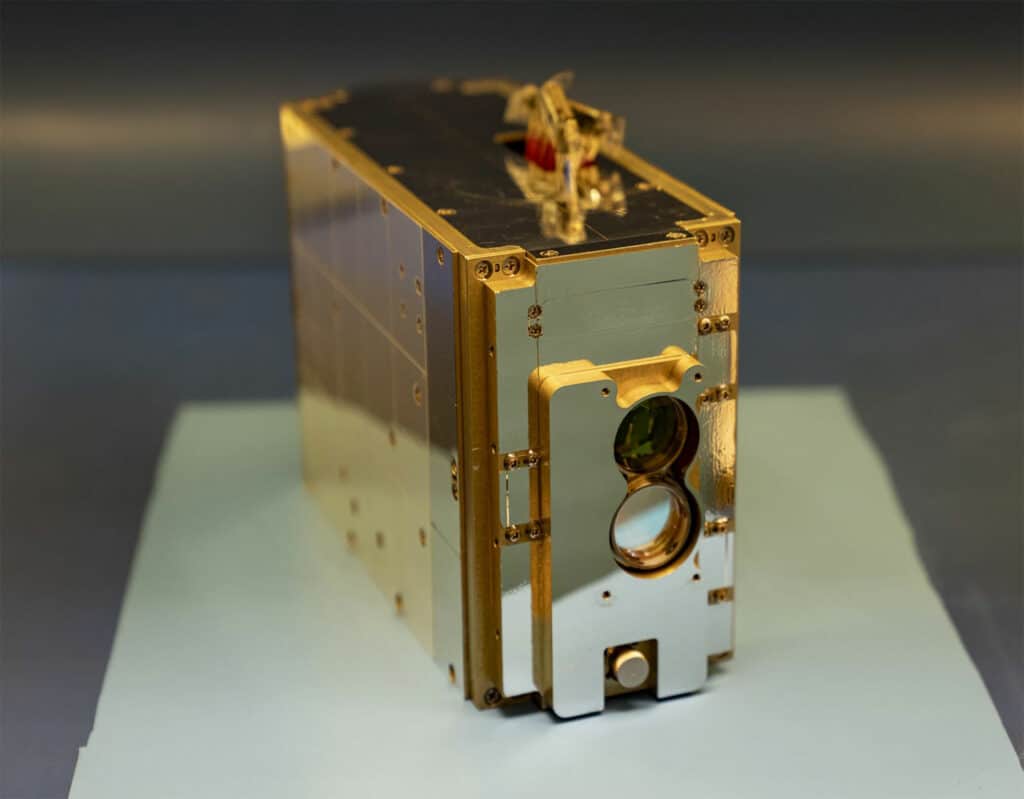NASA’s TeraByte InfraRed Delivery (TBIRD) system has set a new record for the fastest data transfer rate ever performed in space. The golden, tissue box-sized satellite demonstrated a 200 gigabit per second (Gbps) space-to-ground optical link speed between a satellite in orbit and Earth, the highest data rate ever achieved by optical communications technology.
These data rates are made possible by using laser communications, which packs information into the oscillations of light waves in lasers.
Launched in May 2022, TBIRD was carried into orbit by NASA’s Pathfinder Technology Demonstrator 3 (PTD-3) satellite. This data communication link surpasses the previous 100 Gbps milestone previously demonstrated by the same team in June 2022. With this speedy connection, TBIRD can send down multiple terabytes of test data to Earth during a single six-minute pass over a ground station.
NASA currently relies on radio waves to transmit data to and from its orbiting spacecraft with similar methods to how radio broadcasts are sent to a car radio or how a cell phone communicates with a cell tower. More efficient communications are essential for smooth mission operations and effective science as the space agency looks to send humans to the Moon and beyond.
The ultra-high-speed capabilities of laser communications, also known as optical communications, will make it possible to pack more data into each transmission from space. CubeSats like PTD-3 are ideal spacecraft for testing communications technologies due to their cost-effectiveness and small size. PTD-3 is only about the size of two stacked cereal boxes. The TBIRD payload it carries is no larger than the average tissue box.

Built and operated by Terran Orbital of Irvine, California, for NASA, PTD-3 was launched into orbit on SpaceX’s Transporter-5 rideshare mission from NASA’s Kennedy Space Center in Florida and synchronized with Earth’s orbit around the Sun in such a way that the small satellite entered a “fixed” position relative to the Sun. This means PTD-3 is able to pass over the ground station on Earth at the same time twice each day, so TBIRD can test this space-to-ground communications link.
“Achieving 100 Gbps in June was groundbreaking, and now we’ve doubled that data rate – this capability will change the way we communicate in space,” said Beth Keer, the mission manager for TBIRD at NASA’s Goddard Space Flight Center in Greenbelt, Maryland. “Just imagine the power of space science instruments when they can be designed to fully take advantage of the advancements in detector speeds and sensitivities, furthering what artificial intelligence can do with huge amounts of data. Laser communications are the missing link that will enable the scientific discoveries of the future.”
With TBIRD’s successful demonstration of laser communications as a practical tool for transferring data from space to ground, future NASA missions can integrate this technology into their designs.
NASA achieves fastest space-to-ground laser communications link
Source: Tambay News

0 Comments